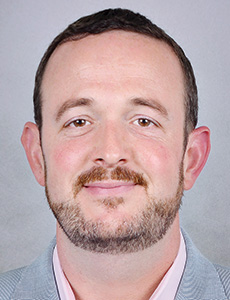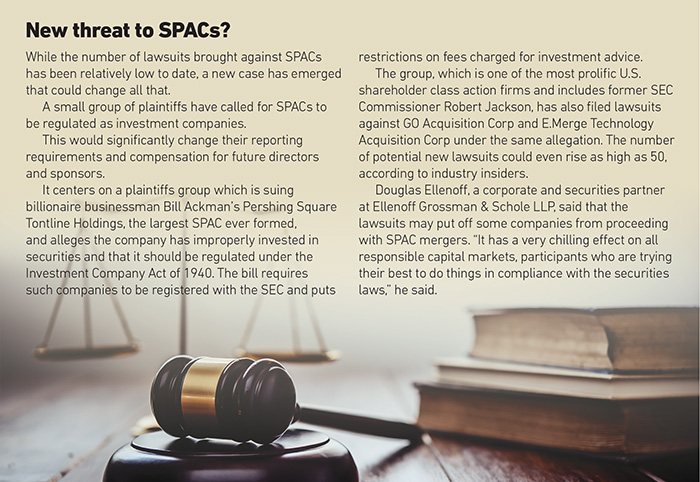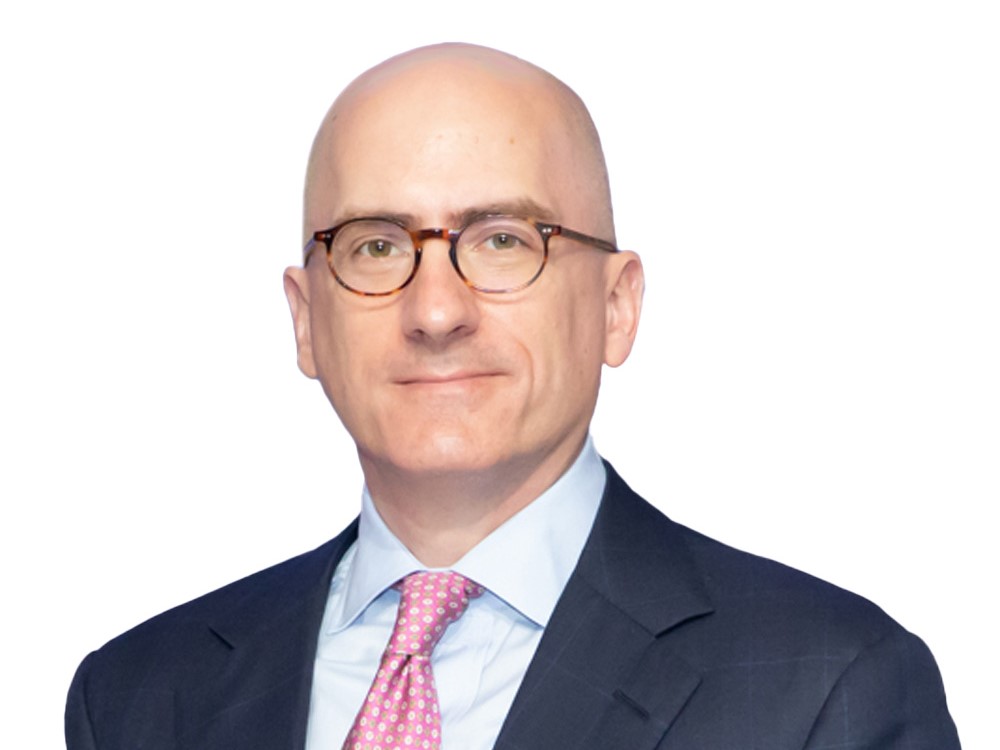SPACs Are a Hot Investment Trend. Why Some Underwriters Look at Them with a Gimlet Eye

Special purpose acquisition companies (SPACs) have soared in popularity over the last 12 months as increasingly more companies have become publicly listed on the stock exchange.
The principle is simple: a management team, backed by investors, form a SPAC to acquire a private company and then they take it public.
The concept has been around for decades, yet it is only now as investors look to get a better return that these companies have come to the fore, across a range of industries, notably electric vehicle manufacturers, green and environmental initiative companies, and health care firms.
More than 500 companies have been formed this way, raising in excess of $100 billion in the process. And with 400 SPACs in the pipeline, that number looks set to continue to rise exponentially.
There are multiple advantages to establishing a SPAC, namely that, unlike an traditional initial public offering (IPO), companies don’t have to go through a full and complicated registration process with the Securities and Exchange Commission (SEC). It also provides a potentially more controlled and profitable way to go public with a company.
Another key benefit for company owners is much-needed capital to grow their business, as well as the knowledge and expertise of the SPAC team. They have longevity too, with only about 10% of SPACs formed since 2009 being liquidated for failing to identify and turn a company public within the standard two-year window, according to the SEC.
Despite the fact they have been in existence for such a long time, there have been few significant legal challenges, most of which have been dismissed.
Yet, because they are still considered a relatively new risk, underwriters are wary, reacting by enforcing higher rates and retentions, and lower limits.
“Security class actions are down so far this year, however, which makes me worry that insurers may become a bit complacent and start lowering rates and retentions, and offer higher limits because they don’t deem SPACs to be such [a] big risk,” said Erin McGinn, vice president, claims at AXA XL.
“That will become a big challenge for underwriters, if claims suddenly start coming in again.”
Complicated to Underwrite
The problem is that SPACs are complex to underwrite because there are normally three insurance policies required to transform a SPAC into a public company.
There may also be three different insurers writing the policies for: the directors and officers (D&O) risks held by the private company; the de-SPAC (the company formed when the SPAC merges with the private company); and the new entity formed once it has gone public.
“There are multiple parties at play here,” said Susan Hamilton, assistant vice president at AXA XL. “If litigation is brought then some or all of them could be involved, and not just the companies, but sometimes the individuals concerned, making it even more complicated.”
It’s also harder to write the risk because oftentimes the insurer doesn’t know what industry the SPAC is going to be formed for, some of which present greater exposure than others.
Worse still, because of the entity’s structure, its underlying business fundamentals and past performance are difficult to assess.
“The largest risk right now is if the de-SPAC can’t meet the promises and guarantees made during the merger,” McGinn said. “Therefore, the SPAC needs to have the proper coverage in place with the required capacity for the de-SPAC.”
All of this translates into potentially more difficult, frequent and severe claims to settle. And the more parties involved, the more complex the claim.
Claims could range from allegations a board and management team misrepresented or failed to fully disclose a target company’s financials to submissions that risks faced by the private company or SPAC weren’t transparently reported on. Then there are potential arguments over which party was liable, particularly if brokers were involved.
“The more substantive issues arise from litigation occurring after the combination has already occurred, alleging failed diligence and an inherent conflict in taking the target company solely for financial gain,” said Michael Machin, director, Willis Towers Watson M&A Practice SPAC leader.
“These types of lawsuits will generally occur after a poor quarter of performance, or in some specific circumstances, after investigative reports come out questioning the underlying merits of the target’s business, leading to a drop in stock market value.”
Although starting from a relatively small base of four federal security class action lawsuits in 2020, that number has already risen to 23 this year to date. However, the real claims picture may not become clear until years down the road. Many insurers are already preparing for an influx of claims by reserving for expected losses.
“Mass Hysteria”?
Taking a contrary view, Machua Millett, chief innovation officer, FINPRO US at Marsh Specialty, said that SPACs aren’t as complicated to underwrite as perceived. Once the underwriter understands the risk, he said that they are relatively straightforward to handle.
“There is mass hysteria from the naysayers out there right now,” Millett said.
“But it’s perfectly possible for an underwriter to dig into the details of a SPAC or de-SPAC and understand the risk.”
The biggest challenge associated with SPACs, said Kristin Kraeger, Aon’s national SPAC and IPO leader, is that rather than insuring against operational risk, as with more traditional IPOs, insurers have to provide coverage based on management’s ability to identify a viable and appropriate target company for acquisition and its effectiveness in executing on the de-SPAC. Then there is the problem of conflict of interest between investors and the management team, she added.
“Candidly, we are starting to see more litigation with plaintiffs’ bars becoming more creative with the lawsuits they are bringing,” Kraeger said.
“There are two main types in particular: litigation at the pre-transaction stage, before the de-SPAC; and claims in the post-transaction phase.
“But, we are still very much at an early stage as these claims make their way through the courts. It’s still very much an evolving landscape that we need to keep a constant eye on.”
Following Protocol
On the de-SPAC side, the management team needs to follow protocol on due diligence and transparency of disclosures. They also need to comply with the latest securities regulations.
Worst-case scenario, said Millett, would be an inexperienced SPAC team that loses sight of the fundamentals of a transaction and an inexperienced management team at the target company. That is something plaintiffs’ bars would immediately pounce upon, he said.
To mitigate against potential claims, insureds need to work closely with their brokers and insurers to examine the latest trends and how they will likely affect pricing, capacity and retention, as well as getting the underwriters comfortable with the risk. This will pay dividends further down the line should claims occur because the parties have been in regular communication, so they know exactly who is responsible for what.
All of these new publicly-traded entities will also have to have an employment practices liability policy for its employees, as well as cyber liability insurance. If the firm provides professional services, they need to have errors and omissions coverage in place too.
“What started as a goldrush has now become a handful of trusted brokers who spend hours preparing and understanding the complexities of these deals and differently aligned interests, and can secure the right D&O coverage for their clients,” said Neil Krauter Sr, practice leader private equity, co-leader management liability at Krauter Group.
“On the other side, underwriters have responded well too, to meet these needs.”
Despite all these potential risks, opportunities abound for commercial insurers to meet the growing need for D&O coverage for SPACs and de-SPACs. Brokers can also play a pivotal role through their expertise and knowledge of the market to secure the best coverage for their clients. &













